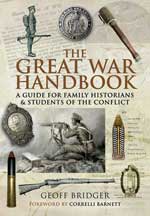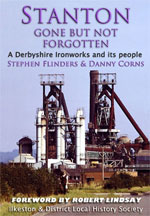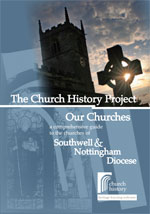Book reviews, Spring 2014
AN EDITION OF THE DAYBOOK OF JOHN REDDISH, 1780-1805.
University of Nottingham digitised publication available at ethesis.nottingham.ac.uk/3962/.
This publication is an M.Phil thesis by the late Ann Cockburn which was awarded in 1979.
The thesis concerns a manuscript notebook kept by the Reddish family, who kept a water mill at East Bridgford and were later framework knitters at Lowdham. The manuscript mostly contains music and the song lyrics, many evidently copied from broadside ballads. These are all transcribed in the thesis together with commentaries on related versions from elsewhere and possible sources. Sound recordings of 12 of the songs and tunes are also available for download as MP3 fles. This is an important source of information on Nottinghamshire folk song.
The Daybook additionally includes some records of payments mentioning named individuals and a few family notes. These are not transcribed in the thesis, but photographic facsimilies of the daybook are also available to download from Nottingham eTheses. The original manuscript is now held by the Vaughan Williams Memorial Library, English Folk Dance and Song Society, London.
This quotation as been copied literatim from the final page of the manuscrhipt:
“Memmory of the Flood
on Wednesday the 11th of February 1795 Came up to the fish house thack within about 3 inches that side next y trent and I went to shelford mannor when it was just at the hight in John Millington’s Boat to help to fetch 199 sheep out of the water the property of Mr. Wm. Welson then tennat at Shelford Mannor.”
Peter Millington
THE GREAT WAR HANDBOOK: A guide for Family Historians & Students of the Confict.
Geoff Bridger; Pen & Sword Books Ltd. £12.99. ISBN 978 1 78346 176 9

There is a plethora of books about the First World War, inevitably, but this one is very different from the usual histories. It is primarily designed to answer many of the basic questions asked by newcomers and experienced historians. It briefy covers what happened but concentrates
on the structure of the British Army and what life was like for ordinary soldiers on the Western Front. In the process many interesting and outstanding facts emerge, occasionally humerous.
The contents show exactly what is covered and readers can turn straight to one specific subject if they wish. For example if you want information on medals go to that section in Chapter 2: The Army, or Chapter 3: The New Soldier for details of basic training and uniforms. (Early in the War about 500,000 recruits wore Kitchener’s Blues made from blue serge because khaki dye came from Germany). Chapter 4: The Trench, contains probably more information than the average inquirer might need. The section on latrines reveals that each infantry company appointed two ‘shit-whallahs’, a job much sought after as they stayed out of the front line. The Army never issued toilet paper so letters from home were re-cycled and few survive.
Letters and parcels are described in more detail in Chapter 5: A soldier’s life: what it was like. He would be expected to carry over 50 lbs. of equipemnt into action - even his woollen underpants weighed 1 lb. Bread, bacon and cheese were carried up to the Front in sandbags, biscuits had to be broken with a trench tool and water was kept in used petrol cans. Fierce fghting would be followed by trench boredom, then over the top we’d go. As soon as you got over the top fear left you, now it’s terror. You don’t look; you see. You don’t hear; you listen. Your nose is flled with fumes and death. Your weapon and you are one.
Death in its many forms is dealt with in Chapter 7, appropriately after a chapter on weapons. Chapter 9: Medical Matters treats wounds, treatment, disease, etc. Apparently 91,000 officers and men died from non-military causes and 163 padres lost their lives, as well as 302 women, mainly nurses. All the Army Corps are dealt with in Chapter 8. Interesting facts, definitions and statistics is the title for Chapter 10. Two examples will suffice. Apparently no parachutes were ever deployed in action by the R.A.F. A Canadian infantryman was the last person killed at two minutes to eleven on Armistice Day.
Finaly there is a useful and sensible guide to visiting the Western Front Battlefields, including sites which have toilets. The last chapter is for Research Sources and Tips for enthusiasts looking for more answers. This paperback is well printed with numerous photographs, diagrams and tables but not enough maps. I would like to have seen more about the Royal Flying Corps and R.A.F., the Royal Navy, horses and conscientious objectors. However, it is packed with useful and, at times, extraordinary information and is an essential guide, for at least the next four years, to this horrendous confict.
Terry Fry
STANTON GONE BUT NOT FORGOTTEN: A Derbyshire Ironworks and its people.
Stephen Flinders and Danny Corns; Ilkeston & District Local History Society, 2013. ISBN 978 0902165 24 3

This softbacked book is A4 in size and contains 182 pages with many illustrations, 32 of which are in colour.
The authors were involved in the 1991 creation of the new Stanton exhibition room at the Erewash Museum and the interest created by this exhibition revealed that Stanton meant a great deal to a lot of people especially those who had worked there. Whilst duly acknowledging the publication in 1981 of a business history of Stanton and Staveley by Professor Stanley Chapman and the 1999 publication Bygone Stanton by Andrew Knighton, the authors realised that there was material for another, different approach to the history of the Ironworks. Using material from a former Stanton engineering surveyor, Fred Alvey decd., and from Danny’s collection of photographs and documents with audio recordings by both of them, the authors could write a history which recorded the stories of the working folk from Stanton Ironworks. This book is the result.
Both authors are locally born and worked at Stanton as did their fathers and grandfathers which gives them an excellent knowledge of the site and its traditions, not only from the official aspects but from the memories of the workforce.
The book starts with a general history of ironmaking in Derbyshire and Stanton’s place within it. It goes on to consider the various sections of the business and there is a very useful plan of the site on page iv at the start of the book which allows readers to position themselves within the complex. Within each section chapter there are recollections from ex-workers, both male and female, at the units which throw interesting light on the processes. These elements are one of the strengths of this book which provide a social history element to the industrial history of the development of the business.
The dark side of industrial work is not overlooked and Chapter 10 deals with fatal and serious accidents. It is, however, followed by Chapter 11 which deals with the lighter side of work showing how the workforce could enjoy jokes and inadvertant humour.
The illustrations are all very pertinent to the text and in many cases help the non-techincal reader to a greater understanding of the processes being described. The colour photographs are very clear and are contained within a special section of the book, probably for production cost reasons.
I have enjoyed reading this book. Whilst not having any connection to Stanton Ironworks I had, during my working life, to visit the plant on quite a few occasions related to industrial injury claims and so became familiar with the layout of the plant and its working methods. The book reminded me of the various sections which I visited over very many years of investigating industrial injuries.
This is a very well produced book, the writing is easy to read and understand and is so very well supported by the illustration which are also very well reproduced by the printing process.
It is a book which will be enjoyed by the general reader as well as the families of ex-workers at the plant and local people. Whilst not in Nottinghamshire the site is very much on the borders of Derbyshire and Nottinghamshire and will be familiar with very many people if only for the two cinder tips which were close to the M1 and which existed for very many years - known to workers as Marilyn Munro and a more graphic name for reasons which were obvious and which need not be repeated here!
This book is a most useful addition to East Midlands industrial and social history. If you buy it you will not be disappointed in any way.
Highly recommended.
Howard Fisher
THE CHURCH HISTORY PROJECT - OUR CHURCHES a comprehensive guide to the churches of Southwell & Nottingham Diocese

For anyone with more than a passing interest in the history of our local churches this recent publication must be regarded, if not indispensable, then surely as an essential companion. Presented as a glossy soft cover A5 size handbook, the 300-plus pages within are both colourful and lavishly illustrated and this extraordinary volume bears all the hallmarks of a distinguished and erudite guide, which indeed it is. A simple and attractive cover design instantly draws the reader’s eye to delve into it’s contents and discover a wealth of historical information on every single church building that exists within the diocese of Southwell and Nottingham, with a separate and complete list of all the known sites where churches have vanished been lost or left in ruins.
Preceeded by a double-page map showing the location of every parish in the County in respect to major road routes, it is an A to Z of each church in active use today from Adbolton All Hallows to Wysall Holy Trinity. There are no omissions, so if you are interested in a particular church one can gain an immediate overview of what to see and where to find it. Each monograph carries a brief account of the actual history of the building, identifable changes in architecture and a description of any special features, ornamentation or other particular item that may catch the eye of the occasional visitor or enquirer. There is a separate section on churches within the city centre boundary, both past and present, in more than sufficient detail. Here, I think the three churches described for Basford and New Basford could also have been included, although the latter (St. Augustine of Canterbury) dating from 1877 and a church I knew well in my youth, was demolished in 1979.
Each entry is supported by an excellent portfolio of photographs and ends with a reference to the website, viz: (southwellchurches.nottingham.ac.uk) where the full history may be found, a credit for the individuals who researched it and any other relevant information. Some histories are yet to be added to the web as they await editing and verification.
This remarkable book is a showcase summation of the Church History Project and represents a valuable documentary source for the huge historical and archaeological archive that has accumulated in recent years from the efforts of a group of over 100 volunteer lay research workers aided by professional historians. The project first evolved around 1998 from an idea inspired by the late John Severn, Diocesan Architect and member of the DAC (Diocesan Advisory Committee). His vision was then taken up, solely for research, by Prof. John Beckett, Dr Christopher Brooke (both of the University of Nottingham) and the Revd David Harper, later to become the three main editors, along with many other individuals who were to contribute to the work of the project team. During 2008 the Project received an enormous boost with a significant grant from the Heritage Lottery Fund which allowed it to expand from not only researching our heritage but into developing education and tourism. For this a wider website was created (www.nottsopenchurches.org.uk).
Funding was to last for a period of five years and officially ceased at the end of 2013, although the research element of the project is ongoing, particularly with regard to the lost medieval churches and chapels of the county (documentary evidence to date suggests an additional 91 existed !).
Having achieved the major goals, to coincide with the end of HLF, the publication of the book and to celebrate the work of the CHP, an event was held at the Minster on the 25th January this year at which the book was endorsed by special guest Lloyd Grossman OBE, FSA and Chairman of the Churches Conservation Trust ‘as a project unique to Southwell and Nottingham and celebrating the heritage of our churches’. Since then copies have been circulated to every church and are available thanks to HLF completely free of charge. All Notts libraries have a copy for loan and a copy for reference. Tourist Information Centres may also have copies.
Alan Clarke